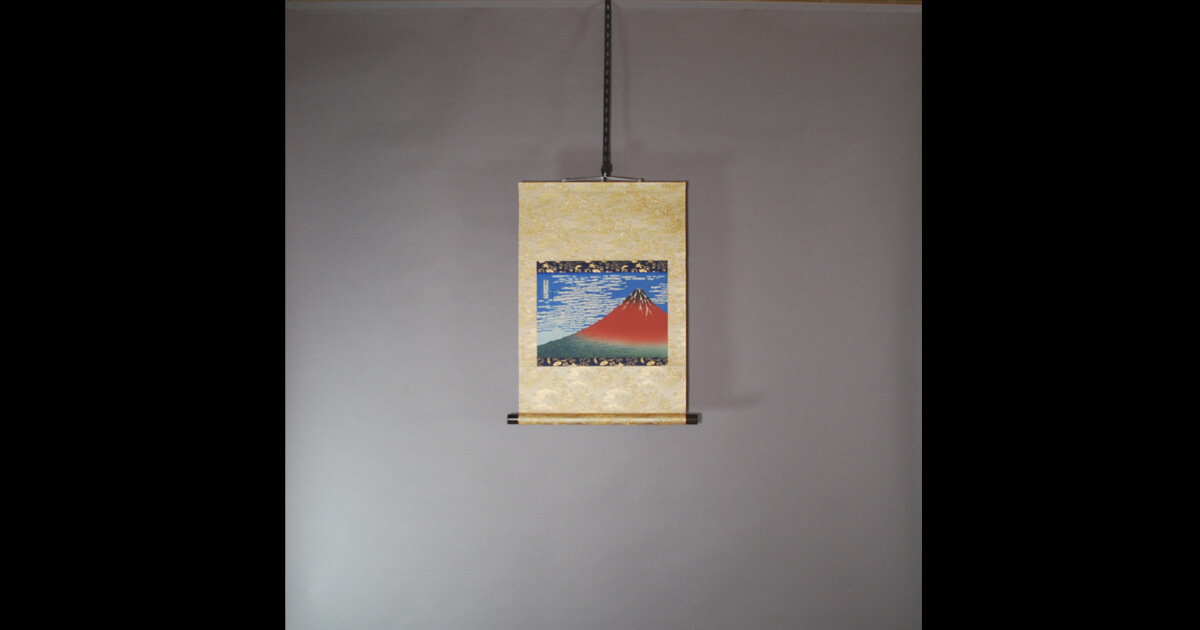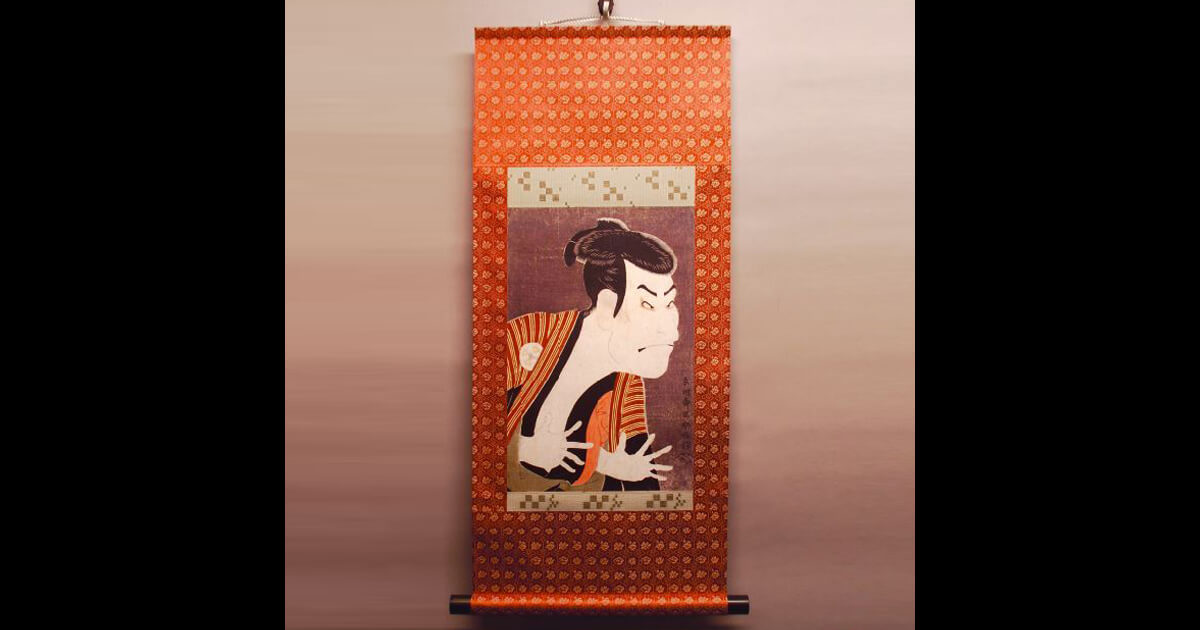Kakejiku makes an excellent accompaniment to Bonsai trees.
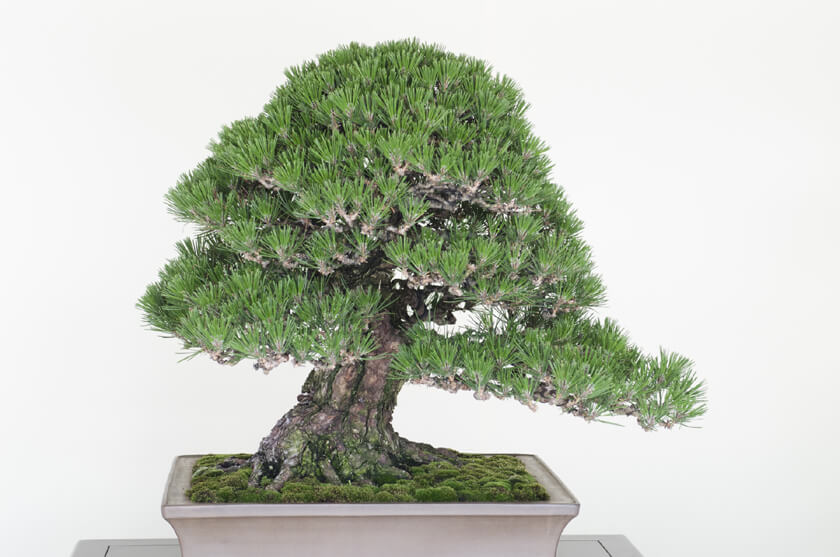
Contents
Bonsai
Bonsai (盆栽) is a Japanese traditional art known as “living art”. It gained international popularity and there are many enthusiasts all over the world for its high artistic quality. “Bonsai” has now become an English loanword of Japanese origin.
Bonsai is an art form using trees planted in containers. It is to represent a minituarized but realistic landscape in a container. The fun part of bonsai is to cultivate and to appreciate how the trees glows and change over the years. Seasonal changes in the scenery are found in a bonsai by integrating the force of nature and human ingenuity. There is a phrase that explains the spirit of bonsai : “keisyo sodai-small size, great similarity”, which literally means to capture the essence of something large in a small form.
The goal of bonsai is to scale down the vastness of nature into a single small container. Exquisite skills and meticulous care are essential to achieve this.
Yuugen
In Bonsai, there lies a fundamental aesthetic concept that is unique to Japanese called “Yuugen”.
Yuugen means the beauty that we can feel sense into an object, even though the beauty doesn’t exist in the literal sense of the word and cannot be seen directly. Yuugen is a sense not to enjoy the superficial beauty of an object, which is in front of our eyes, but to enhance the beauty more impressive by imagining its latent beauty.
For example, we think a flower is beautiful when we see it. This beauty is the superficial beauty. The flower has a past of withstanding wind, rain, and snow until now, and will someday wither, however beautiful it is now. Although the beautiful flower itself impresses us, the beauty will be more impressive than the superficial beauty, when we can imagine its past and future.
If you conceptualize Yuugen as a suggestiveness, lingering memory, aftertaste, or implication, you can more easily understand Yuugen. Imagination is essential for feeling Yuugen, so many artists in Japanese-style painting have, since ancient times in Japan, developed a method to encourage their viewers to exercise their imagination. This is also true of Bonsai. Cultivating bonsai is much more than just appreciating the look of individual trees. It is an appreciation of beauty of nature. Not just the superficial but the inner beauty that bonsai has. It inspires a sense of the passage of time and the changing seasons through : thick tree trunk, bark on the trunk, foliage, graceful branches, the shapes , colors and so on.
For more info on Bonsai, please see the following video :
Bonsai and Hanging Scrolls as Accents
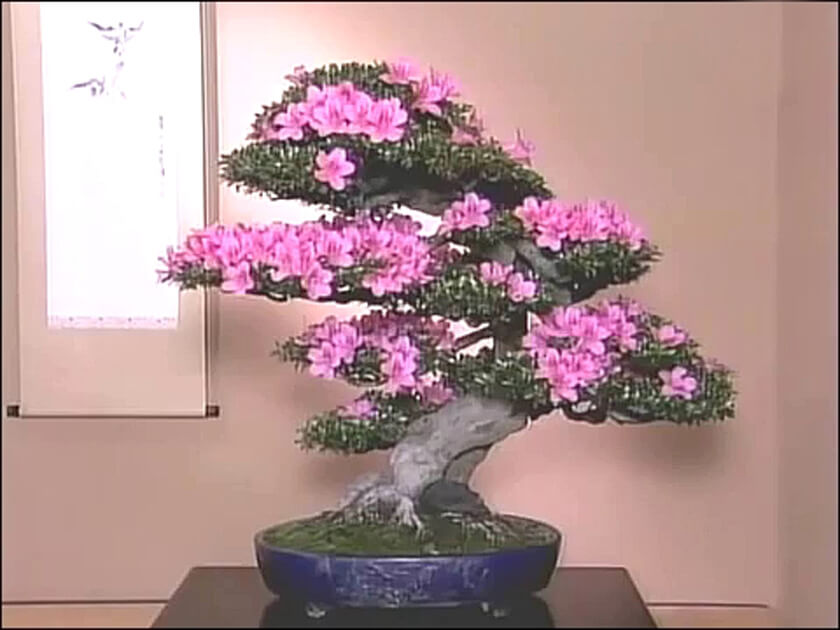
There is a special alcove (tokonoma) that you can find in a traditional Japanese room. It is used to show off artworks like a hanging scroll. However, there are not so many items to be displayed other than scrolls.
In Japan, it is not customary to display a number of pictures on the wall like Europe and the United States. Instead, Japanese people regard tokonoma as a space for artworks and enjoy choosing scrolls according to events or seasonal changes. His/her own view is reflected in tokonoma.
What kind of a scroll matches Bonsai?
Calligraphy

After all, the best thing that goes well with Bonsai is calligraphy. Its meaning can give philosophical elements to Bonsai, making the overall atmosphere having deep resonance.
Landscape
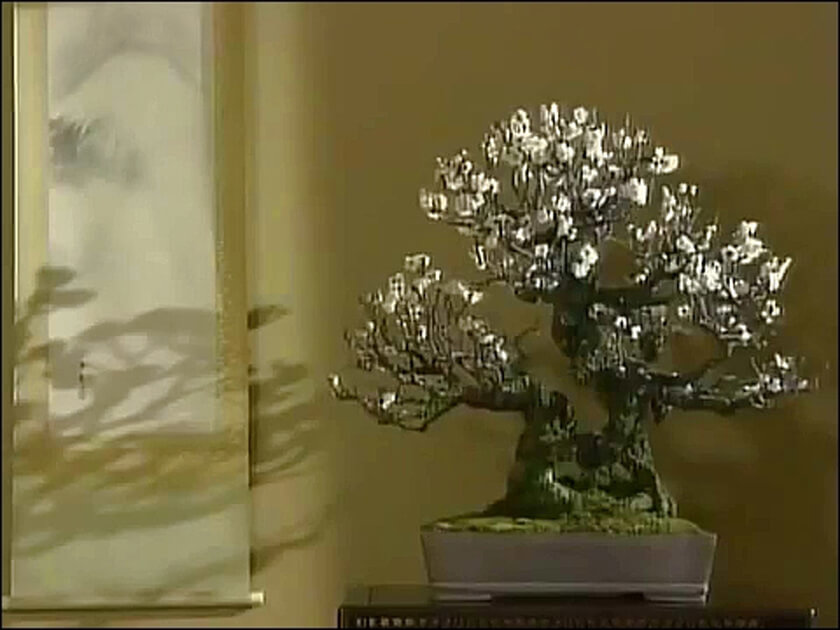
The art of bonsai is “nature in miniature” as mentioned above. In this sense, the scroll that depicts landscape is the right one since it also represents “nature in miniature”.
For example, take a look at the above picture. There is a sweet plum bonsai with a scroll that depicts snowy Mt. Fuji. It indicates that the season is changing from winter to spring.
Sunrise
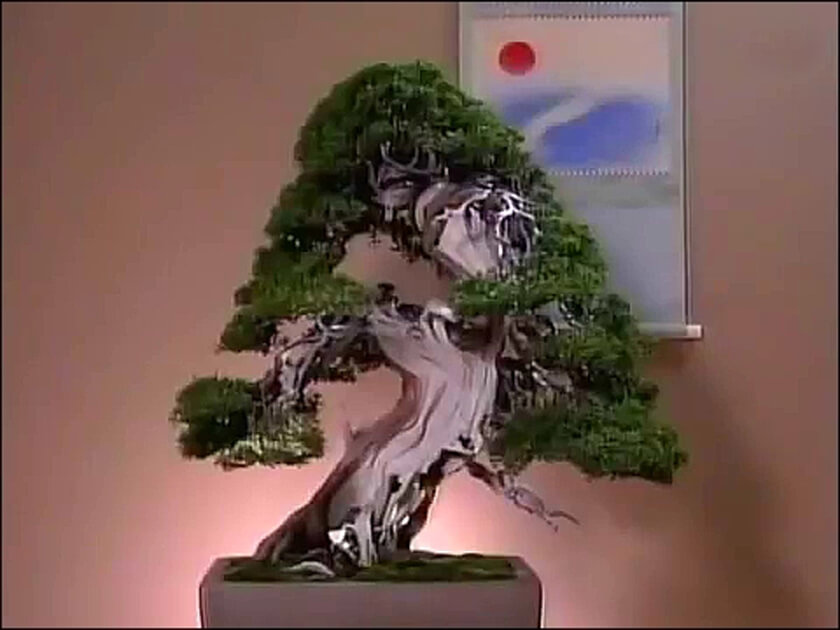
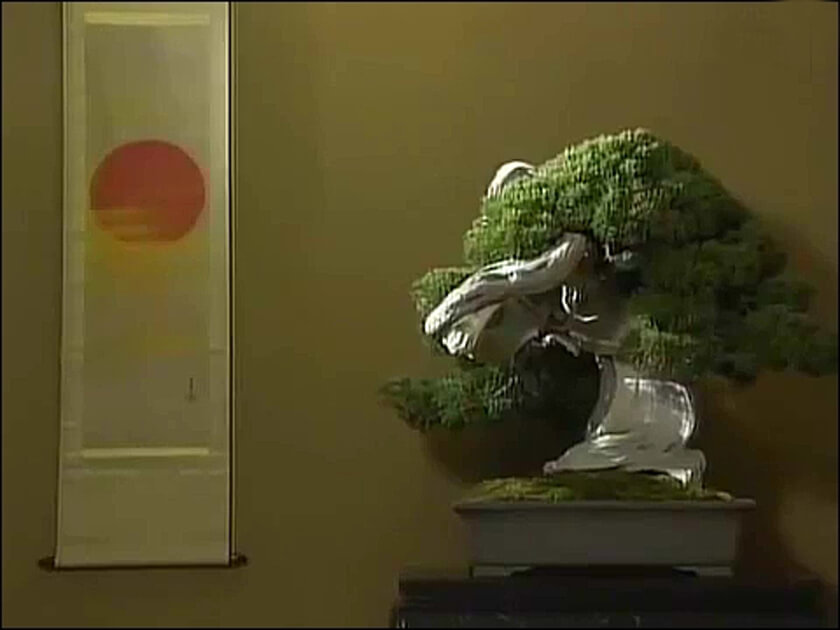
Sunrise and pines, old standby in Japan, produce beautiful balance between red color of the rising sun and green color of pines. Both are considered to be auspicious items in Japan so they make a wonderful combination on celebratory occasions.
Above picture reflects the passage of time, that the pine bonsai has been seeing the sun rises and sets countless times. It makes us sense an eternity the old pine tree bonsai had spent.
Moon
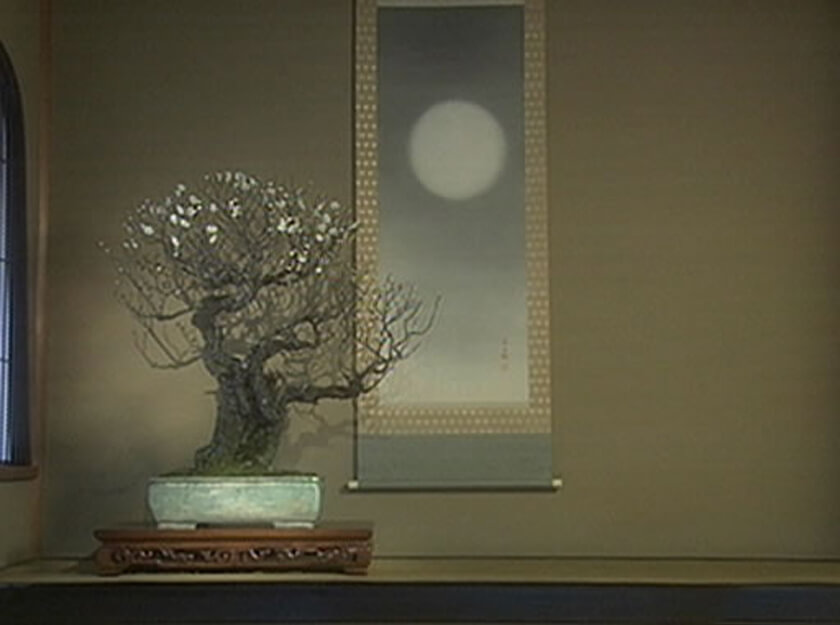
The beauty of the moon has been appreciated by Japanese since ancient times. There is an occasion that we enjoy moon-viewing in Autumn. It is a favourite motif in any genre such as poetry, “waka-Japanese waka poem” and paintings. The moonlit nature in the dead of night is dreamy and beautiful. The combination of bonsai and the moon can produce dignity in a tokonoma.
That ends the examples of standard combinations. Of course, there will be many more combinations with bonsai artists’ unique ideas. With seemingly limitless variety of the combination of bonsai and scrolls, we will have a lot more fun when displaying our own tokonoma. Tokonoma is a space where we expand our artistry and show it off.
Bonsai and Scrolls Meet the World
Today, bonsai is even popular overseas. It is remarkably popular in Vietnam.
In 2010, total Japanese exports to Vietnam increased three-fold from that of previous year, and topped 4.3 billion yen in 2012. Vietnam accounted for a half of total exports then. Its popularity can be explained by a cultural background that bonsai was introduced to Vietnam, the same as Japan, from China so Vietnam originally had a tendency to accept Japanese bonsai style.
This year, there was an exhibition in Vietnam called :”Agritech Vietnam 2017” ITOH COMMERCING Inc. organized their trade show booth in cooperation with ART NOMURA. They displayed their bonsai with our hanging scrolls there.
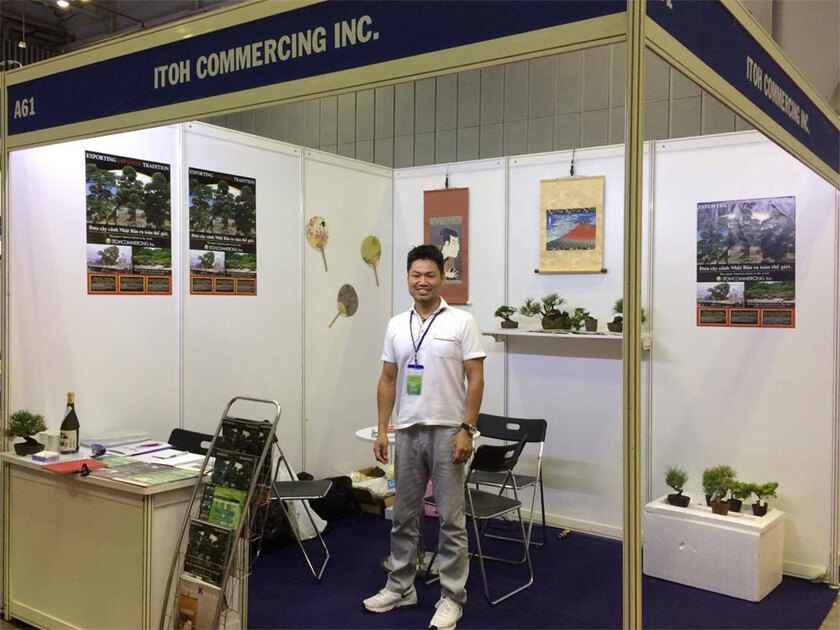
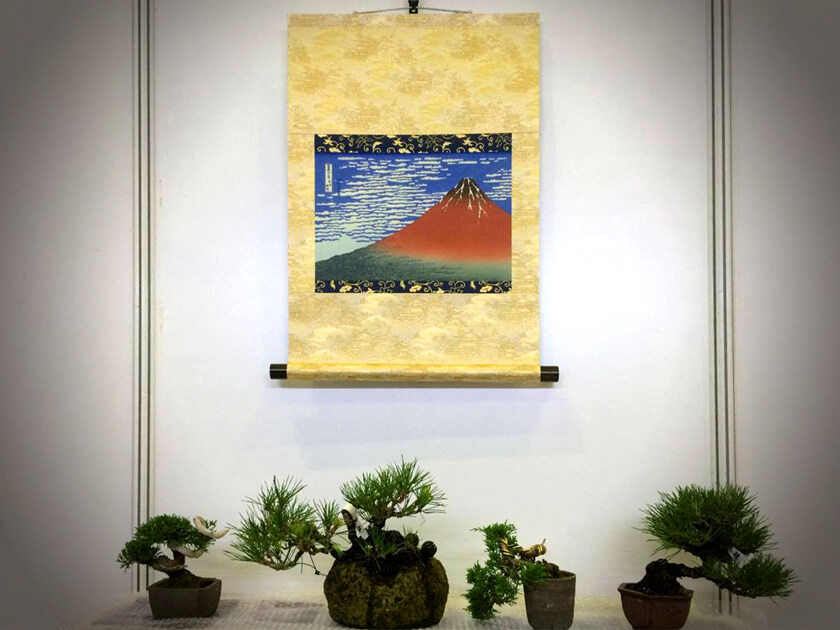
Ukiyo-e Kakejiku from ART NOMURA
The green area in the lower part of the artwork depicts the extensive forest of Mt. Fuji. Being displayed together with bonsai, it gives you more realistic feeling. Red Mt. Fuji, blue sky and green color of bonsai creates a beautiful contrast.
For more info on wood brock print, Ukiyo-e and our kakejiku, please see :
We were informed from ITOH COMMERCING Inc. that both bonsai and hanging scrolls were well received by attendees.
We are happy if this exhibit has become an opportunity to convey the appeal of the great combination : Bonsai and A Hanging Scroll and also to foster a better understanding of Japanese aesthetics “Yuugen” , which is the underlying concept of bonsai.
Lastly
Bonsai and hanging scrolls. They are the Japanese traditional arts that Japan proudly believes to be among the world’s best and they share the common ground in which both stimulate our imagination to feel more than what we actually see.
The combination of bonsai and scrolls can make the ground well known together.
We hope the appeal of hanging scrolls will be conveyed to all over the world along with the appeal of bonsai.

